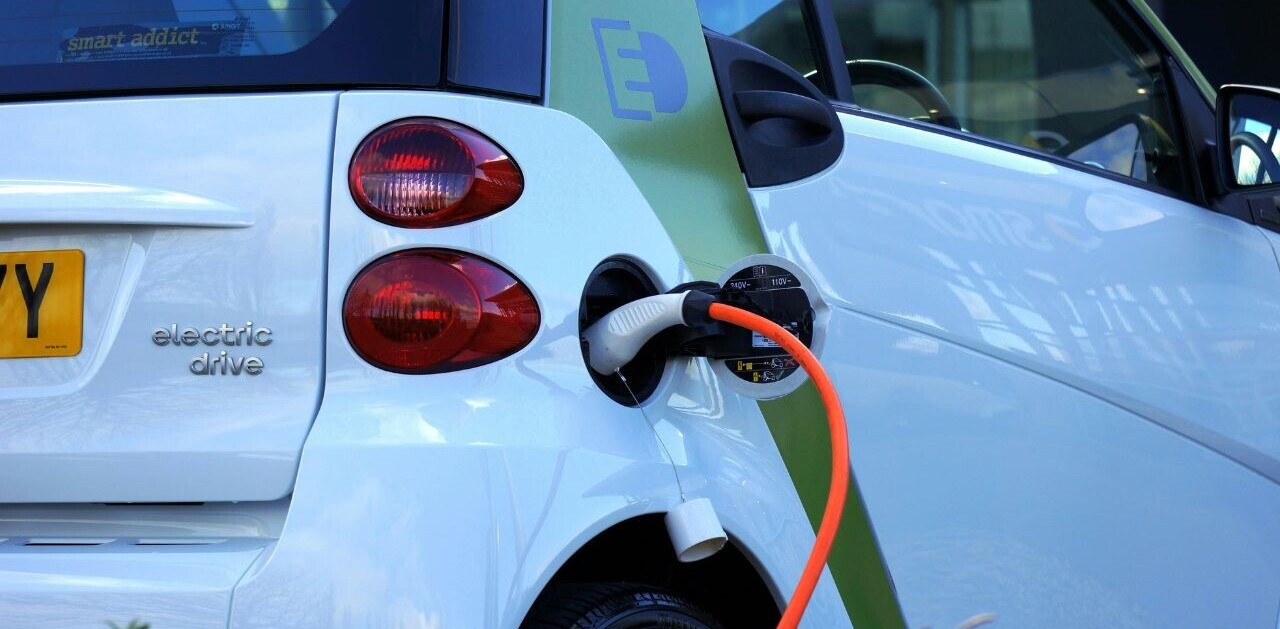
In the fairly near future, Earth will have nine billion mouths to feed. To solve this dilemma, Rob Aukerman, president of U.S. operations at Elanco Animal Health, has been a vocal advocate of “proven technologies” to assist farmers in delivering more food using fewer resources. Citing Elanco’s acquisition of ChemGen—a private food specialization company—Aukerman promoted food enzymes earlier this year as “natural digestives”.
His concerns regarding food delivery are well shared. A 2010 symposium hosted by the Global Harvest Initiative in Washington, DC, promoted a need for continuous innovation to meet global food demand, with Jason Clay of the World Wildlife Fund arguing that in order to do so, “the footprint of food” must be frozen.
“Holding crop area fixed and assuming only historical yield growth, food production will fall far short of the needs by 2050,” Clay’s colleague, IHS global insight managing director of agricultural services John Kruse, agreed. “Meeting those needs with the same land area would require global crop yields to increase nearly 25% faster than historically.”
As the global community faces a food crisis, biotechnology—genetic manipulation of food DNA to meet consumer desire—has frequently been cited as the cause, as well as the solution, of the problem. Timothy Wise recently cited biofuel production as a “demand shock” that consumes crop production and yields price increases. The Guardian’s Larry Elliott argues that as demand for protein-heavy diets in developing nations increases, supply constraints mean that a 50% increase in food demand will exist by 2030. And Nestle Chairman Peter Brabeck-Letmathe also cited rising production of bio-fuel—and the high subsidies it receives—as the direct cause of rising food prices.
“The only difference is that with the food market you need 2,500 calories per person per day, whereas in the energy market you need 50,000 calories per person,” Brabeck-Letmathe told BBC News in July. “It takes about 4,600 litres of water to produce one litre of pure ethanol if it comes from sugar, and it takes 1,900 litres of water if it comes from palm oil.”
Advances in bioechnology have helped us push food production to its limit. But with the exit of cheap food a strong reality, it is worth assessing how technology has allowed it to be produced in mass amounts, what the potential consequences of genetically modified organisms (GMOs) are, and what the global public’s role is in their use or disuse.
The move towards biotechnology
Prior to 8,000 BC, nomadic hunter gathering was the norm. Populations thrived on the harvesting and processing techniques that allowed agricultural production to keep pace with human population growth. This growth extended agricultural practice to more vast, diverse lands, and by 1,000 BC, many of the practices that define agriculture today, such as using manure for fertilizer, were already in use.
The 19th century paved the way for technology developments; 1800 saw the first simple threshing machine, hoes, and seed drill come into use, with steam power replacing horse power in the 1890s. John Deere’s introduction of the steel plow in the 1830s gave way to tractor use in 1905, leading the way for production of nitrogen fertilizers in 1920 and pesticide use in the 1940s.
The world population reached one billion in 1825, and the population of industrialized nations grew from 500 to 800 million between 1850 and 1900. As agricultural science gained prominence, consumption of animal proteins, cereal and calories per capita also skyrocketed. The world population of three billion that had arrived by 1960 gave way to the industrialized agriculture that defines food production today. Chemical inputs, mechanized farming methods, and the start of the animal agriculture business all saw dramatic increase in yields, and the use of technology to produce GMOs was born.
GMOs: What they are and why they’re used
According to the WHO, GMOs “can be defined as organisms in which the genetic material (DNA) has been altered in a way that does not occur naturally…it allows selected individual genes to be transferred from one organism into another, also between non-related species.”
Simply put, genetic modification involves manipulating the genetic makeup of food to create or enhance characteristics that are desired by humans. As scientific advancements throughout the 1980s discovered that DNA could be transferred in pieces from one organism to another, genetically modified products including cotton and tobacco plants were produced.
The success of the first tested genetically engineered cotton in 1990 led biotech company Monsanto to introduce herbicide-immune soybeans—aka, “Round-Up Ready”—in 1995, and the 2000 discovery that modification can enrich foods using nutrients and vitamins has made biotechnology a global giant in the world of food production.
European disapproval

Arguably the most interesting aspect of biotechnology is its role in creating or enhancing “characteristics that are desired by another species.” Food production has historically evolved alongside consumer demand, utilized to meet each population’s needs and desires. It is therefore worth considering how a population’s conception and consumption of food impacts the global debate surrounding GM use.
As consumer confidence in food supply safety has decreased in Europe following scares throughout the late 90s, discussion extended to consumption of GM foods. General disapproval throughout Europe has led to extensive legislation of GM marketing tactics since biotechnology became prominent. The need for agreement between EU Member States and the European Commission means that no authorizations for GMO release into the environment have been granted since October 1998.
But with 12 authorization applications pending, debate within Europe regarding the effect of GMs continues. Eight out of nine ongoing cases have been examined by the Scientific Committee on Plants. In all cases, the committee declared that the information submitted by Member States did not justify their bans. The WHO declares that all GM products on the global market have passed risk assessments put in place by national authorities, which evaluate health risks to the environment and public.
The problem is not limited to these potential risks. As Brabeck-Letmathe discussed, it is not only biofuels themselves, but the subsidies they receive—and the amount of land being used to produce them—that has some in the development sector seriously worried.
“It’s an extremely serious issue and it’s only getting worse,” Stephen Brown, UK Campaigns Manager at The Global Poverty Project, told The Next Web. “An area the size of London is being grabbed every 6 days to create biofuels, crops that could be used for food.”
“Next year the UK will host the G8 in London,” Brown added. “I hope G8 governments will put these issues high on the agenda”.
The validity debate
Earlier this week, a study led by scientists from Caen University and published in the Food and Chemical Toxicology Journal claimed that the adverse health effects of Roundup-tolerant genetically modified maize caused treated groups of female rats, studied over their two-year lifespan, to die younger than the spared control group.
The research claims that maize that had been modified for resistance to the Roundup herbicide yielded evidence for “a raft of health problems”—implicit concern that such herbicides could cause similar health problems in humans:
“The rodents experienced hormone imbalances and more and bigger breast tumours, earlier in life, than rats fed a non-GM diet,” the researchers claim. The GM- or pesticide-fed rats also died earlier.
This kind of GM maize accounts for more than half the US crop, yet the French team says this is the first time it has been tested for toxicity throughout a rat’s lifespan (Food and Chemical Toxicology, DOI: 10.1016/j.fct.2012.08.005).”
The research’s publication has received swift critique from journalists and academics. Forbes contributor Tim Worstall strongly dismissed the research, calling it more closely aligned with political bias than concrete science. U.S. citizens, he says, have consumed GM corn for years now; Europeans have not. With no noticeable differences in disease prevalence, he concludes that blaming GM technology on health and environmental problems is poor science.
Dr. Wendy Harwood, senior scientist, John Innes Centre, called GM a neutral technology in itself that cannot be linked to inherent health or environmental risks. Nevertheless, she argued the results of the study “do indicate possible concerns over long-term exposure to Roundup that require further study.”
Tech shortcomings in the global food market
The catch-22 is that while biotechnology has been linked to health concerns, lack of technology can also have negative effects. A 2011 study conducted for the Food and Agricultural Organization of the United Nations found that causes of food loss and waste in low-income countries related, in part, to harvesting techniques limited by fewer tech resources.
The study concluded that farmers in such nations needed “to organize and to diversify and upscale their production and marketing.” Analysis of food practices within developed and developing countries found that roughly one-third of food produced for human consumption is lost or wasted globally—1.3 billion tons per year.
“The fact remains that we produce enough food in the world already but structural problems like access to markets and storage means that it is not reaching everyone,” Oxfam spokesperson Lucy Brinicombe told The Next Web. “With almost one billion people going to bed hungry every night, it is crucial that we tackle the problem.”
Lack of technological resources isn’t limited to the developing world. Short of the machines necessary to create cheap food at high volumes, some U.S. companies compensate by producing “formulated” versions of various foods.
Earlier this year, Chobani Greek Yogurt founder Hamdi Ulukaya allowed All Things Considered correspondent Dan Charles to tour the factory in upstate New York that churns out one million pounds of Greek yogurt per year—but refused allowance to photograph the machines that make it. Seeing the market appeal for Greek yogurt, other brands have tried to compensate for their lack of Ulukaya’s machinery by adding “milk thickeners,” such as milk protein concentrate, to their own versions.
“That ruins the expectation in the consumer’s mind of how pure and simple this product is,” Ulukaya told Charles. He added that yogurt companies’ allowance of starch or concentrated milk, as well as a lack of legal definition for Greek yogurt, contributes to the problem, allowing manufacturers to artificially modify food to compensate for lack of technology.
The role of consumer choice
In the U.S., a country that has historically endorsed GM use—a 2011 ISAAA report found that the U.S remained the leading global producer of biotech crops—documentaries like 2008’s Food, Inc. have questioned corporate control of the food industry, making the case that executive involvement in food regulations—or lack thereof—allows GM use to enable mass food production at the cost of public health. As health problems continue to soar and additional medical spending for obesity has reached $190 billion, many have blamed GMOs as the culprit.
Bonnie Brûlée is not so sure. The UK food blogger and founder of Miso Tasty argues that the concept of technology offering cheap food in huge quantities is misguided. Technology, she insists, does not enable cheap food itself, but rather production volume. It is retailers, not manufacturers, who must be confronted for price evaluations.
“Technology itself is not responsible for cheapening food per se—the production of anything at volume is always going to make it less expensive,” Brûlée told The Next Web. “This is not technology’s fault, but the retailer’s fault for pushing hard on the producer to produce a cheaper product and attract the customer who is price-sensitive.”
“It is also important to note that technology has enabled us to make food affordable for the masses…and also allows us to consume all sorts of foods safely, especially if you live in a remote place or you do not have necessary refrigeration. Mass producing can [also] enable us to afford certain food-preserving processes such as vacuuming and sterilising that need volume to pay for itself.”
As suggestions for how to combat the food shortage continue, acknowledging use of biotechnology and the role of machines in mass food production is inevitable. Likewise, the genetic modification of food will remain under fire. In this regard, it is worth acknowledging that while consumer choice and knowledge remain crucial aspects of this debate, the inherency of biotechnology—to genetically modify food based on consumer demand—means that as long as desire exists for mass amounts of cheap food, its production remains inevitable.
Home grown initiative

The good news is that as long as consumer demand dictates food market behavior, there are alternatives to biofuels and the high subsidies that sustain them. The Technology Strategy Board has supported collaborative competitions for investments in projects focusing on initiatives including sustainable protein production. In light of a predicted domestic vegetable protein production shortage in the UK, the organization will partner with the Department for the Environment, Food and Rural Affairs (Defra) and the Biotechnology and Biological Sciences Research Council (BBSRC) to invest over 75 million pounds in innovative technological research and development in areas such as crop productivity, sustainable livestock production, and greenhouse gas reduction.
“We fully support a future where sustainable agriculture plays a part and are looking at ways in which innovation can support a more sustainable agricultural industry that will aim to lower the negative impact of [environmental, public health, and social inequality consequences],” TSB spokesperson Laura Quinn told The Next Web.
Other initiatives are also at work. Last year, The Royal Botanic Gardens, Kew launched the UK Native Seed Hub at the Millennium Seed Bank to draw on the Bank’s collection of native UK seeds. A member of the UK’s Sustainable Restaurant Association, Richard Bell, owner of London pub The Three Stags, sells only seasonal food, including free-range meat and vegetables, to his customers. And Brinicombe says that while technological advancements would help, it is often unconsidered alternatives that could really make a difference.
While some technological advances might have a role to play, simpler measures like investing in small holder agriculture would be far more effective and sustainable,” Brinicombe suggests. “At the moment, there are 500 million small holder farmers feeding almost two billion people worldwide. They remain a relatively untapped and unacknowledged solution that could make a big difference in global food security if better investment were forthcoming.”
See also: How the Internet is bringing obscure food communities to life
Image Credits: Scott Olson/Getty Images, Justin Sullivan/Getty Images, Dan Kitwood/Getty Images
Get the TNW newsletter
Get the most important tech news in your inbox each week.




